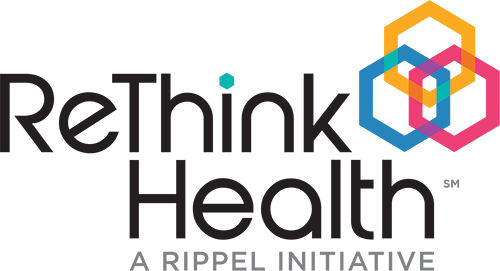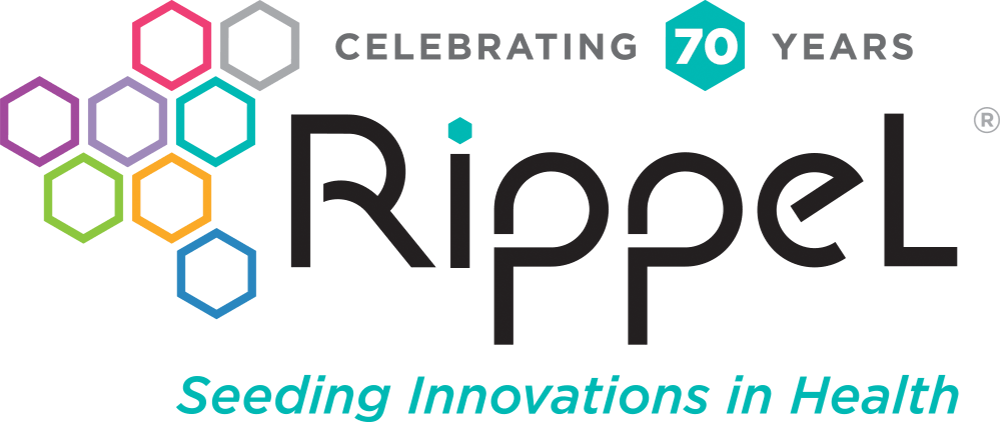The Stew BLOG
Insight Spotlight Series: Portfolio Design for Healthier Regions
This month, ReThink Health is sharing what we are learning across our projects through this Insight Spotlight blog series.
What is the Portfolio Design for Healthier Regions Project?
This week the spotlight is on the Portfolio Design for Healthier Regions project, through which ReThink Health is exploring and advancing system stewardship with local stewards, who are collaborating to design regional portfolios for equitable health and well-being in their communities.
Every region has a portfolio of investments being made toward the health and well-being of its population. Few people really think about it that way, however, because it’s not a coordinated set of investments from a single, regional purse. Instead, it is a group of mostly siloed investments that each organization makes on its own to influence health and well-being in some way. When regional stewards begin to wonder about their potential to bring about the kind of equitable ecosystem their region really needs for health and well-being, it’s worth asking whether or not the region’s existing portfolio of investments is effective. If it isn’t, what is the path stewards could take to establish more effective and equitable resource allocation going forward?
ReThink Health is working as a learning partner with eight funding organizations and multiple community collaboratives across two communities in Florida and Michigan to better understand what it will take to shift the mindsets of organizational decision makers and, ultimately, their organizations’ investment priorities. Each participating organization plays a key role in financing health and well-being in its community. Many possibilities arise by intentionally bringing together the community’s “power centers,” which have both influence and resources. The hope is that, as organizations shift how they think about their own roles, relationships, and investments, other organizations and stakeholders may begin to shift, too. The broad mix of involved organizations and sectors include philanthropies, hospitals, local government agencies (spanning county mental health services, community and youth services, public health, and a taxing district), and community-based coalitions.
In each community, participating organizations work in collaboration with others to foster equitable systems change. All share a strong commitment to invest their organizational resources differently in support of this goal. They also seek to center residents’ experiences and strengthen resident leadership in their efforts—both to ensure that eventual decisions align with the values and needs of community members and to foster a deeper sense of belonging and inclusion among all individuals and organizations in their community.
What is ReThink Health trying to learn through this project?
Across ReThink Health projects, we are learning the conditions under which the partners we support are able to take up the practice of stewardship, how their mindsets and actions shift as their stewardship journeys progress, and how they influence the mindsets and actions of others with whom they work. The Portfolio Design for Healthier Regions project is exploring a potentially catalytic stewardship practice—shifting the entire pattern of investments across organizations in a region so that it is better designed to produce equitable health and well-being. By understanding the processes and motivations that enable stewards to more effectively invest their own resources—appreciating their institutional interests and how their investments align (or don’t) with those of other organizations—we think it is possible to shift investments across a region to better produce the vital conditions that everyone needs to thrive, while also alleviating urgent needs among those who are struggling and suffering right now.
What patterns are emerging so far?
As we mentioned in our first Insight Spotlight blog, our approach to learning and evaluation at ReThink Health concentrates on identifying patterns within complex adaptive systems. By looking at patterns across multiple, intertwined scales—at the individual human level, the organizational level, and the network level—we can paint a picture showing what works, for whom, how, and under what conditions. Here is a snapshot of some strong patterns we’re starting to see in the Portfolio Design for Healthier Regions project.
– Understanding how investments interact across organizations in a region. This is a tall order, but an essential task if a distributed network of organizational investors is to effectively shift overall priorities in a region toward the vital conditions that everyone needs to thrive. Each investor must begin to understand both its own priorities and how they fit together (or not) with those of other organizations—in a nutshell, this is the essence of a regional portfolio.
It is challenging to piece together the full picture of a regional portfolio because most organizations have a large set of relatively small, disjointed investments—a program here, a program there, and some grant funding. It also requires trust and transparency among partners who typically aren’t used to talking openly about their priorities, approaches, and budgets.
ReThink Health created the Well-Being Portfolio structure for precisely this purpose. It helps any number of organizational stewards map their respective investments (of money, leadership, time, knowledge, capacities, etc.) across six major categories of urgent services (i.e., services needed to alleviate adversity) as well as seven vital conditions (i.e., things everyone needs all the time in order to thrive). When those who hold the purse strings classify their priorities in these ways, they gain a new perspective on the extent to which their investments respond to urgent needs (e.g., by providing life-saving care, food assistance, or temporary shelter) versus those that expand vital conditions (e.g., by assuring a thriving natural world, basic needs for health and safety, humane housing, meaningful work and wealth, lifelong learning, reliable transportation, as well as a sense of belonging and civic muscle).
-Recognizing the untapped potential of belonging & civic muscle. After mapping their current investment priorities, our partners in both Florida and Michigan identified belonging & civic muscle as a key area for greater investment. They began to see that belonging & civic muscle plays an out-sized role in their respective work because it is both a vital condition unto itself and a practical capacity for success in virtually every other kind of endeavor to enhance health and well-being. Humans have deep-seated needs to connect and to contribute. When people feel loved and valued, it reinforces a strong human propensity to care for each other even beyond the boundaries of family and culture. However, the reverse is also true. When people feel excluded, devalued, or dehumanized, a variety of increasingly toxic effects tend to show up, including: loneliness, anxiety, depression, addiction, or suicide, chronic illness, infectious disease, environmental hazards, and violence. Unjust systems therefore erode the sense of belonging and civic muscle that we all need to thrive together.
The good news is that organizational investors in both Florida and Michigan have discovered two complementary ways to strengthen belonging & civic muscle. It can be built through direct funding for activities, such as youth leadership development, community organizing, or outreach with those who are routinely marginalized; and, it can be built through indirect, design principles that infuse opportunities for authentic connection and contribution across all aspects of organizational policy, practice, service delivery, and investment priority. In other words, it doesn’t necessarily take a lot of new, discretionary money to start building belonging & civic muscle. It can also grow when organizations become more intentional about honoring every person’s dignity and inviting their special talents in every interaction, with everyone, every day.
-Cultivating intentional interdependence across organizations. This can help those who hold the purse strings in their respective organizations understand the characteristics of the combined portfolio in their region overall and to decipher the unique role that each organization plays in bringing that portfolio to life. We have observed that organizations working in a collaborative context don’t often take a step back to discern the particular value-add of each organization in fostering regional health and well-being. What are the distinctive goals, areas of expertise, and resources that each organization brings to bear in its work? How is it listening to and building power with residents who possess critical context expertise? How can each organization emphasize what it is best at in a way that creates cohesion across organizations and drives transformative change over time?
It is obvious that no single organization or sector can do everything. In order to make decisions about investments across organizations in a region, it is essential for each organization to have clarity about the role it is best suited to play—and to be crystal clear about the roles that others are playing. Our organizational partners are developing shared, distributed leadership structures to better foster intentional interdependence among them. They are also discovering that even small groups of stewards bound by mutual understanding and trust can drive progress in ways that are not possible when working separately.
-Building greater system awareness. This is a key practice for understanding how investments interact and for building intentional interdependence. One of the biggest barriers to progress that we have observed is the extent to which organizational leaders don’t fully understand the priorities and strategies of other organizations that are also working to foster equitable health and well-being in their regions. Often times, these leaders know one another well—their organizations partner on particular projects, they sit on boards together, or they know each other from prior careers. But these relationships don’t tend to translate to a system awareness that enables them to understand connections across organizations to support strategic decision making around investments, and to coordinate their efforts more effectively together.
Regional stewards are now developing network maps to understand how they are (or are not yet) in relationship with one another. They are also working to better connect their organizations to residents and working to build decision-making power of residents. Part of system awareness is understanding the role residents play as context experts and improving the agility of established organizations to really hear and respond to the wisdom of resident leaders—far beyond what is often thought of as “community engagement.”
Want to keep up with what we are learning?
Up next in our Insight Spotlight blog series is what we’re learning in the Hospital Systems in Transition project.
Follow all of our learnings on our blog, The Stew, where you can find practical tools and ideas for stewards.

